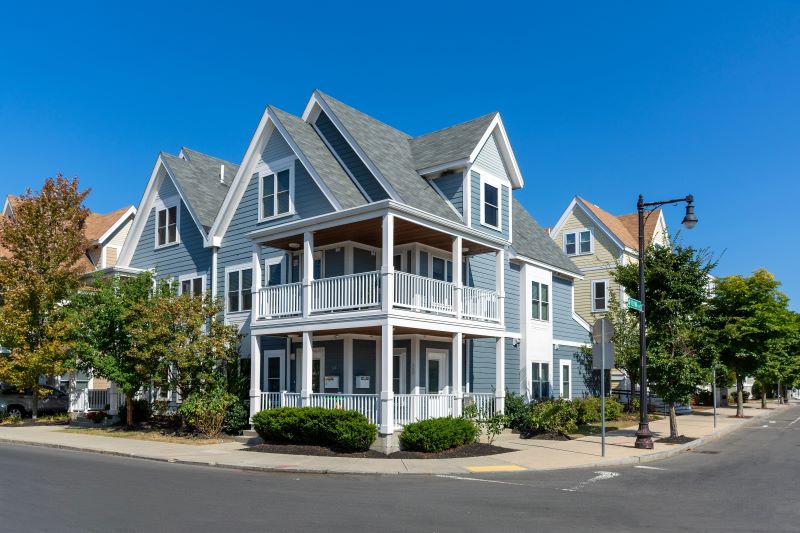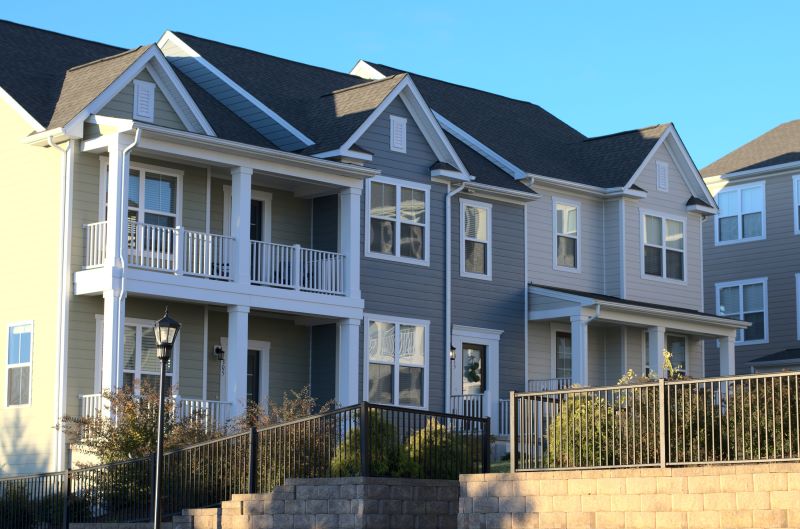
Homeownership is a major financial decision, and one of the key choices buyers face is whether to purchase a single-family home or a Boston multifamily property. While both options provide a path to building equity and long-term financial stability, multifamily properties offer additional income potential that can make homeownership more financially viable. Understanding the advantages and challenges of each can help you make an informed decision based on your financial goals and lifestyle preferences.

Pros of Buying a Multifamily Property vs. a Single-Family Home:
Rental Income Offsets Mortgage
One of the most compelling benefits of purchasing a multifamily home is the ability to generate rental income. By living in one unit and renting out the others, owners can significantly offset their mortgage payments. This arrangement, often referred to as “house hacking,” allows homeowners to reduce their monthly housing costs while still building equity in their property. In some cases, rental income may cover the entire mortgage, allowing owners to live rent-free or at a significantly reduced cost compared to owning a single-family home in Boston.
Lower Risk of Financial Hardship
Owning a Boston multifamily home can provide a financial safety net in times of uncertainty. If a homeowner with a single-family property loses their primary source of income, they must cover the entire mortgage payment on their own. In contrast, multifamily property owners can rely on rental income to help bridge financial gaps. Even if one unit becomes vacant, income from other units can still provide some level of financial security. This diversified income stream reduces the overall risk of financial hardship and makes it easier to weather economic downturns.
Easier to Scale in Real Estate Investing
For those interested in growing their real estate portfolio, starting with a multifamily home can be an advantageous move. Multifamily properties generate consistent cash flow, which can be reinvested into acquiring additional properties. Banks and lenders also view rental income favorably, making it easier to secure financing for future investments. Compared to purchasing multiple single-family homes, multifamily properties offer a more efficient way to scale a real estate portfolio while benefiting from centralized management and maintenance.
Higher Overall Returns
Multifamily properties often yield higher overall returns compared to single-family homes. The combination of rental income, property appreciation, and equity growth leads to greater wealth accumulation over time. Additionally, economies of scale work in favor of multifamily property owners, as maintenance costs, insurance, and property management fees can be spread across multiple units. This maximizes profitability and enhances the long-term financial benefits of owning real estate.

Cons of Buying a Multifamily Property vs. a Single-Family Home:
More Management Responsibilities
While multifamily properties offer financial advantages, they also come with increased management responsibilities. Owners must handle tenant-related concerns such as lease agreements, rent collection, maintenance requests, and potential conflicts between tenants. Even a small multi-unit property requires time and effort to maintain, making property management a crucial consideration. Some owners choose to hire professional property managers to alleviate these responsibilities, but this adds an extra cost that should be factored into the investment decision.
Higher Purchase Price
Multifamily homes generally come with a higher upfront cost compared to single-family homes. This can make the initial investment more challenging for first-time buyers or those with limited savings. Additionally, because multifamily properties are often valued based on their income-generating potential, they may have higher price tags in desirable rental markets. Buyers must assess their financial readiness and consider whether they can comfortably afford a larger mortgage or if a single-family home is a more practical choice.
Stricter Loan Requirements
Financing a Boston multifamily home can be more complex than securing a mortgage for a single-family home. Lenders typically require higher down payments, sometimes ranging from 20% to 25%, compared to the lower down payments available for single-family homes, which can be as little as 3% with certain loan programs. Additionally, banks often have stricter credit score requirements and debt-to-income ratios for investment properties. While owner-occupied multifamily homes may qualify for better loan terms, buyers should be prepared for more stringent lending criteria overall.
Potential for Tenant Issues
Owning a multifamily property means dealing with tenants, which can present challenges. Late rent payments, property damage, noise complaints, and vacancies are all potential concerns that require time and effort to manage. Even with careful tenant screening, unforeseen issues can arise that add stress and financial uncertainty. While these risks exist in any rental property, they are more pronounced in multifamily housing since multiple tenants are involved. Effective property management and strong lease agreements can help mitigate these challenges, but prospective buyers should be prepared for the realities of being a landlord.

Conclusion
Deciding between a single-family home and a multifamily property depends on individual financial goals, risk tolerance, and lifestyle preferences. Multifamily properties offer significant advantages in terms of rental income, financial security, scalability, and long-term returns. However, they also require greater management effort, come with higher upfront costs, and involve additional complexities such as stricter lending requirements and tenant-related challenges. For those willing to take on the responsibilities of being a landlord, investing in a Boston multifamily home can be a powerful strategy for building wealth and financial stability. On the other hand, for buyers who prioritize simplicity and a traditional homeownership experience, a single-family home may be the better choice. Carefully weighing the pros and cons of each option will ensure a decision that aligns with both short-term needs and long-term financial aspirations. We look forward to working with you.
Disclaimer: The information provided in this article is for general informational purposes only and should not be construed as legal, financial, or real estate advice. While we strive to ensure accuracy, policies and regulations may change, and individual circumstances may vary. Readers are encouraged to conduct their own research and consult with legal advisors and/or local authorities before making any housing or investment decisions. The opinions expressed are those of the author and do not necessarily reflect the views of any affiliated organizations or entities.

Kristian Kotov
Published April 2, 2025










